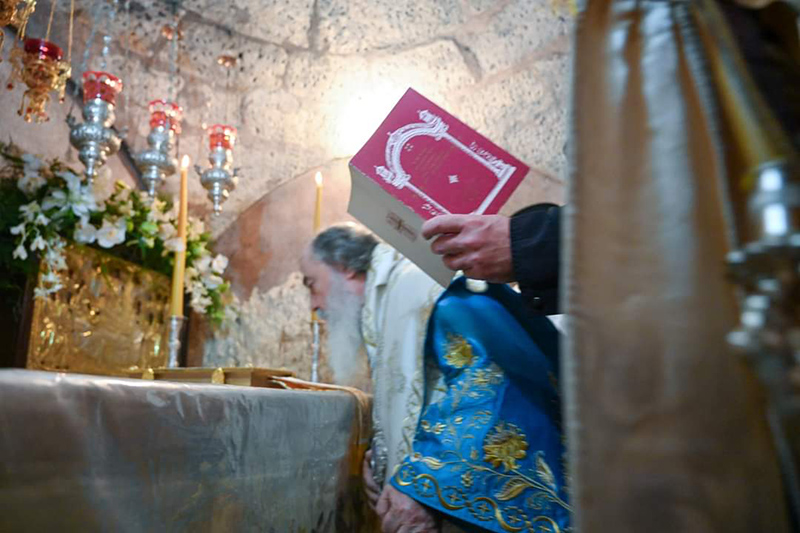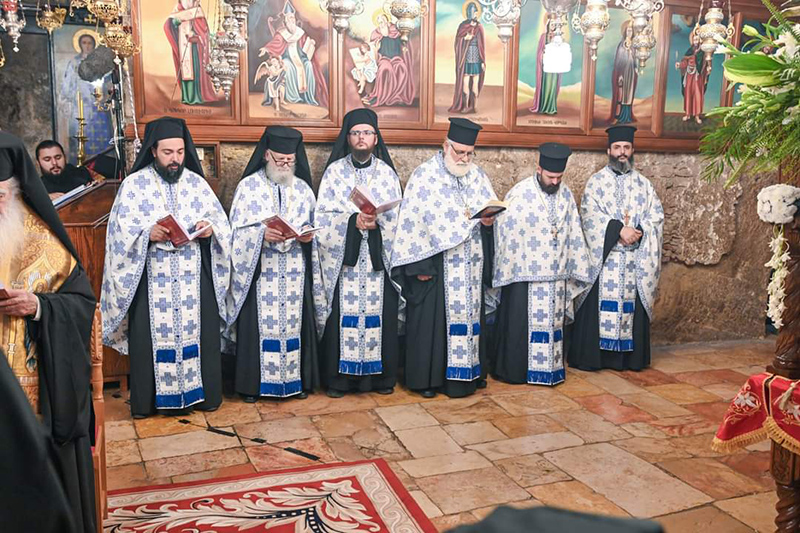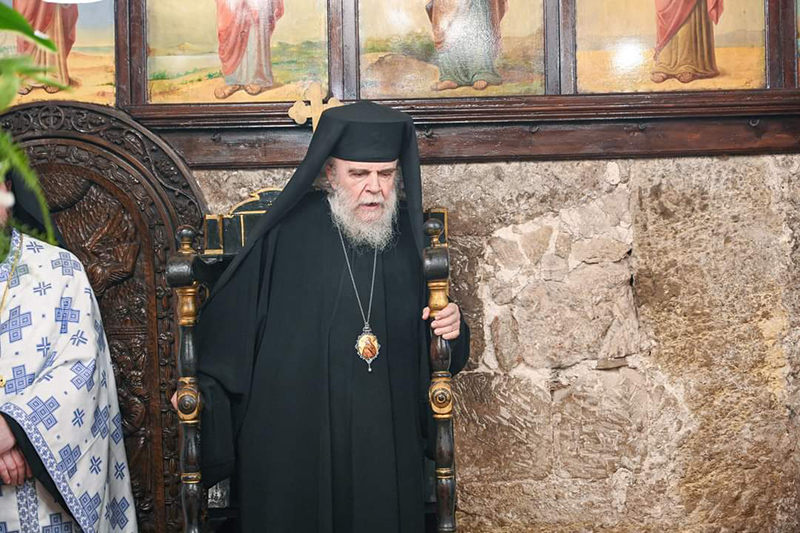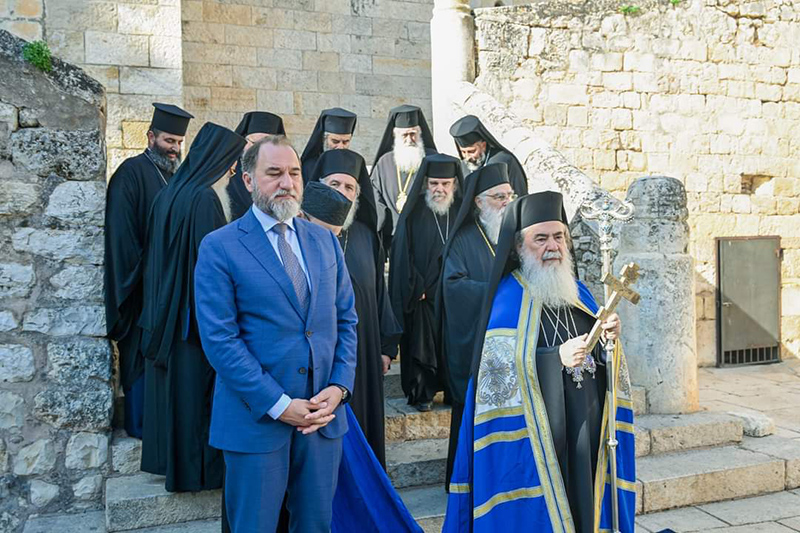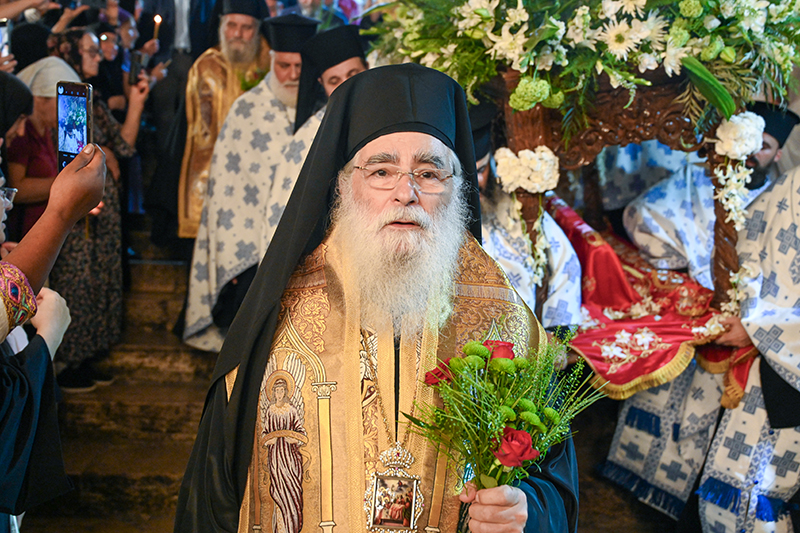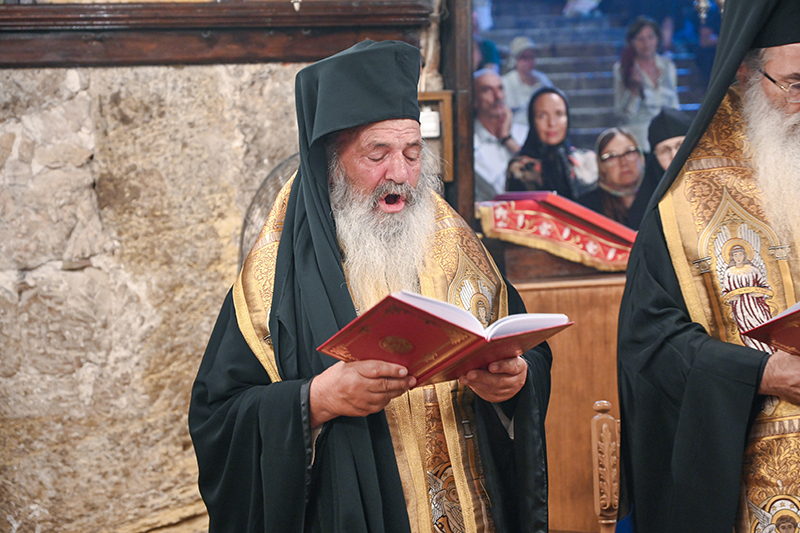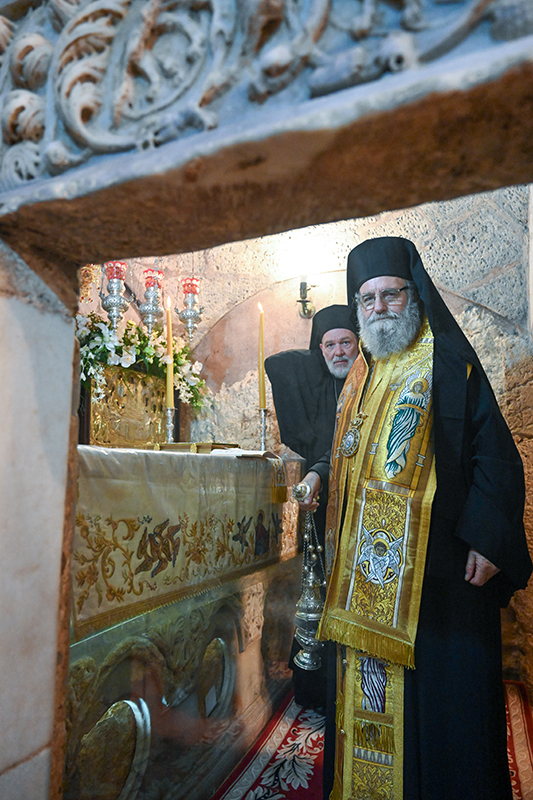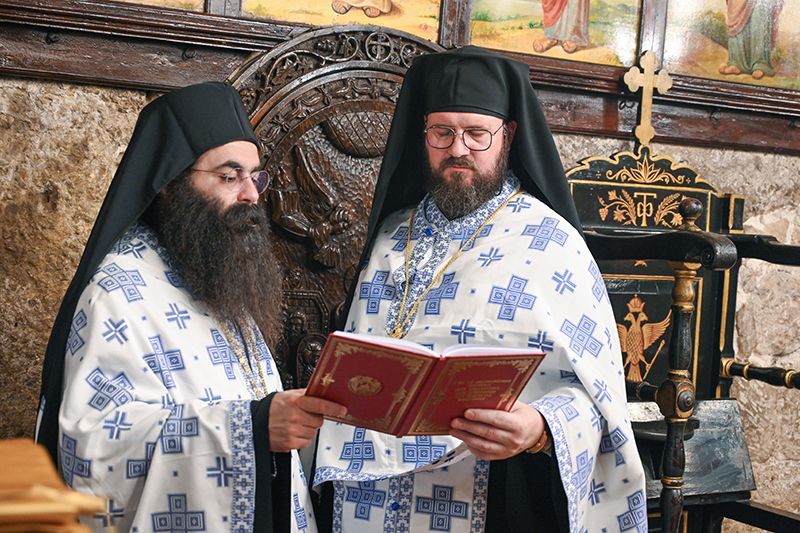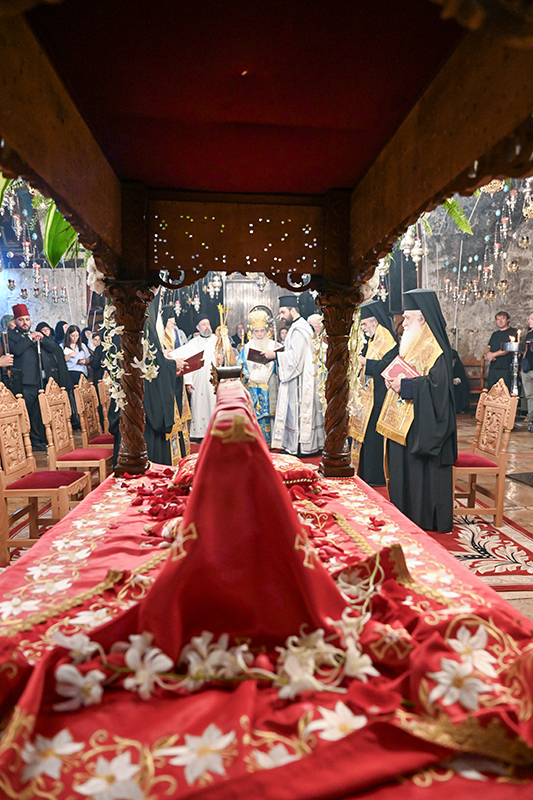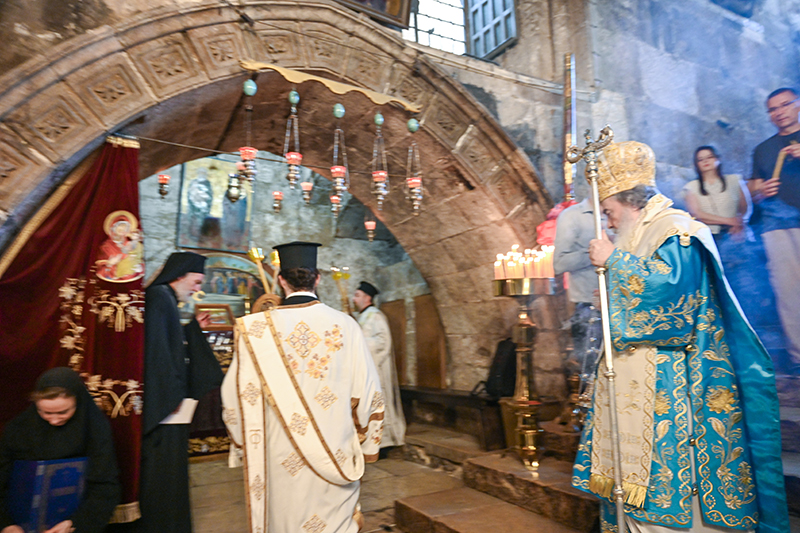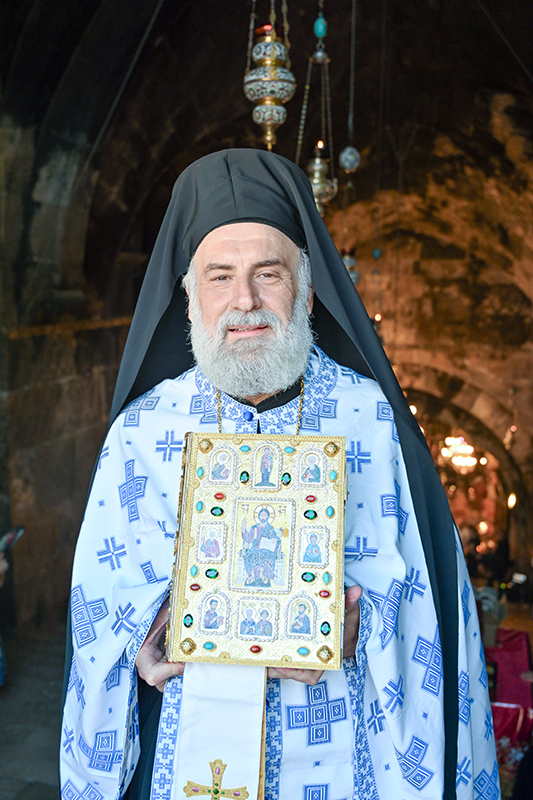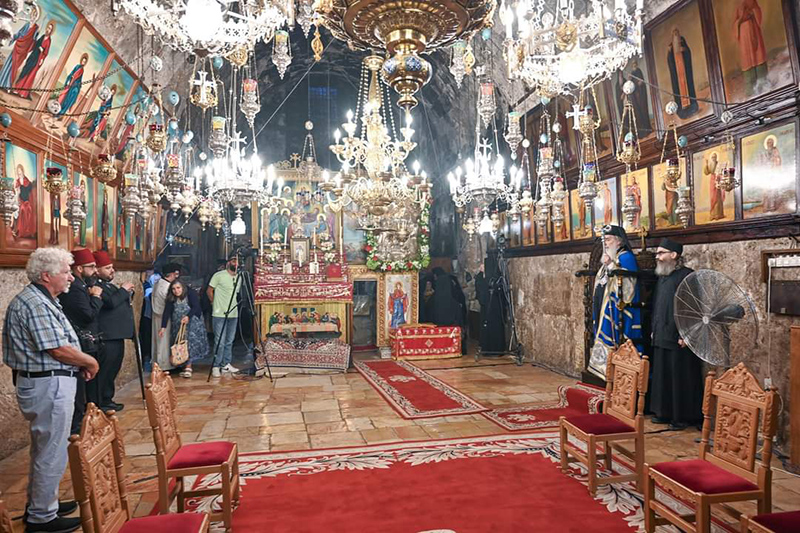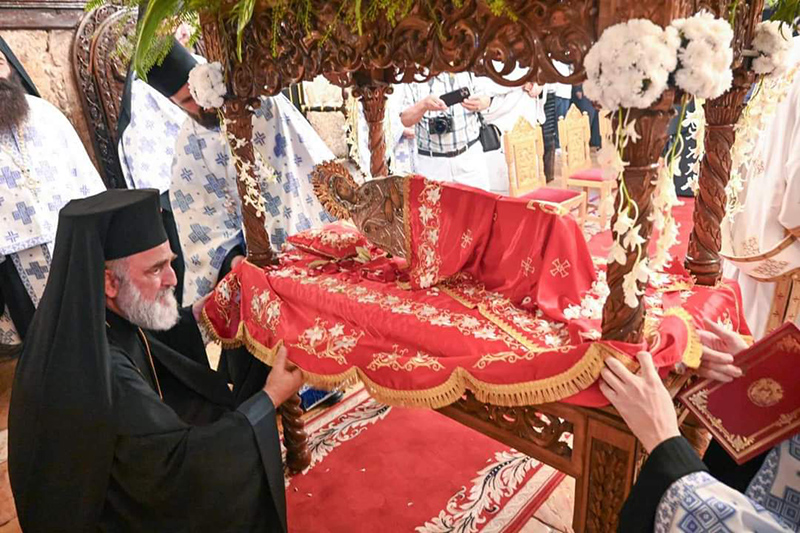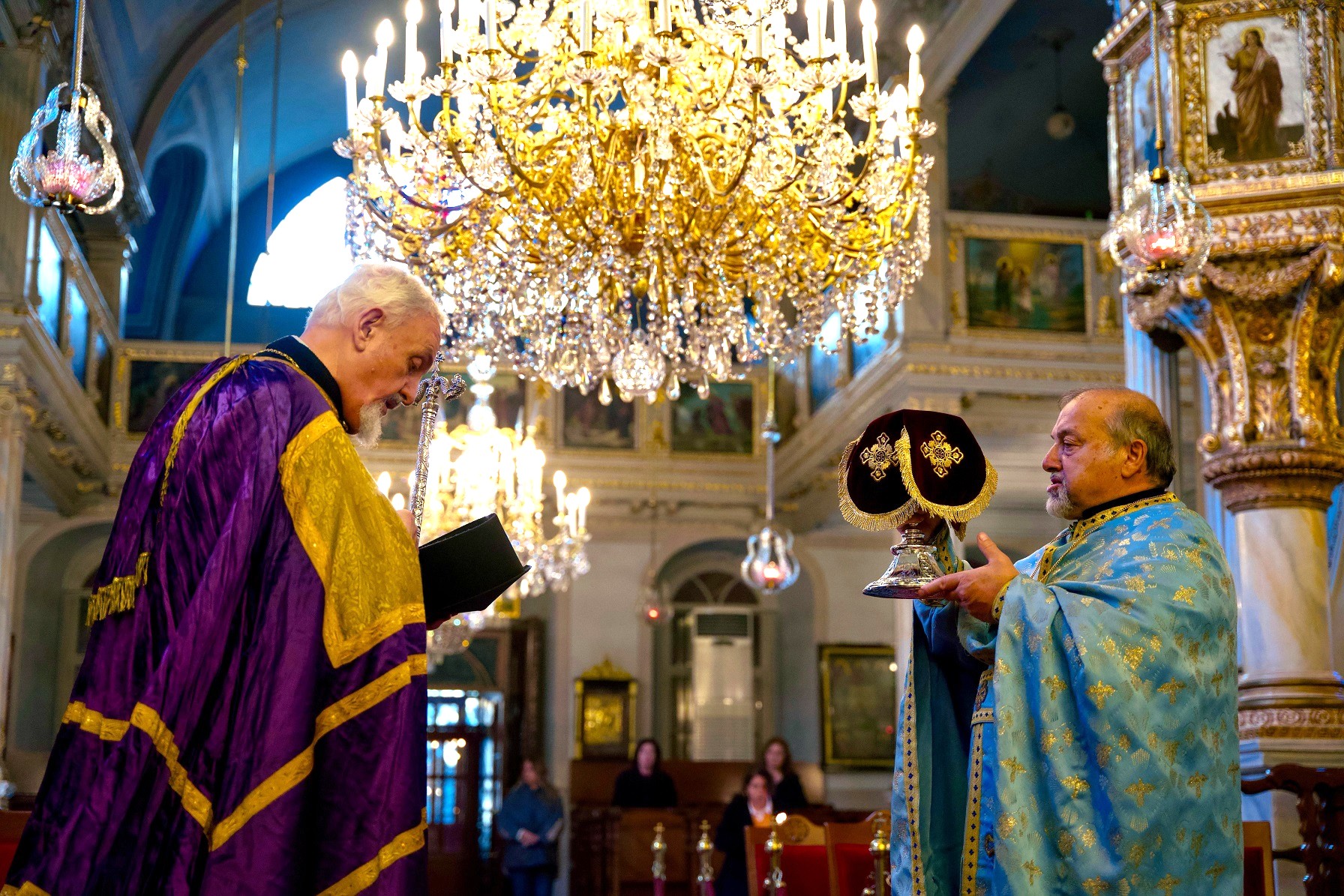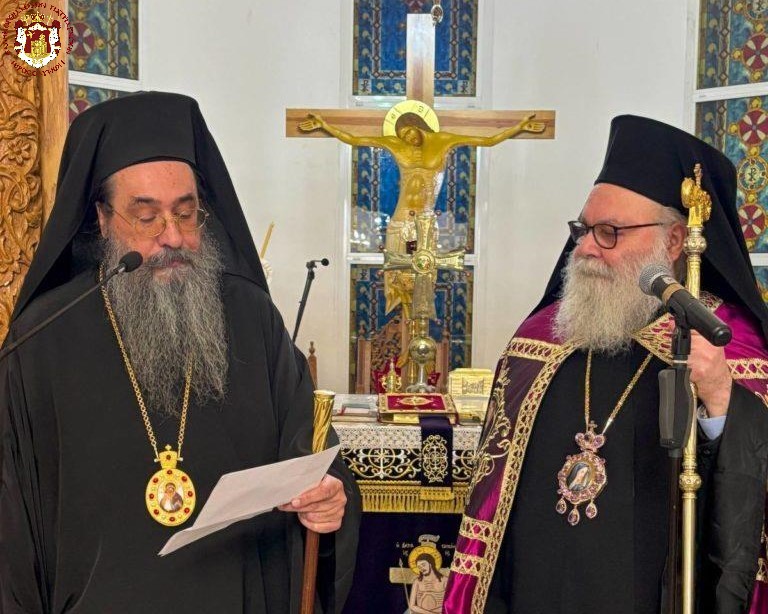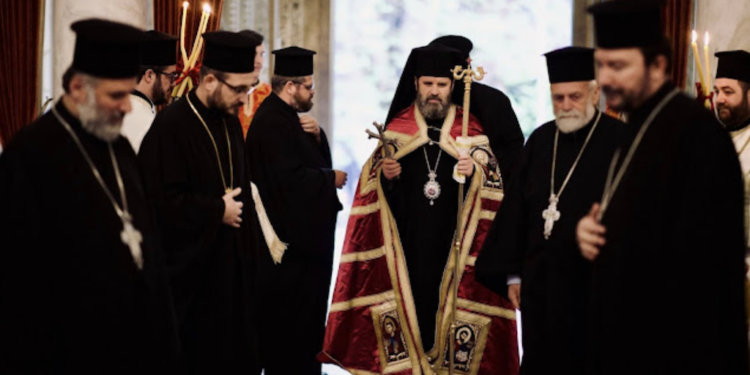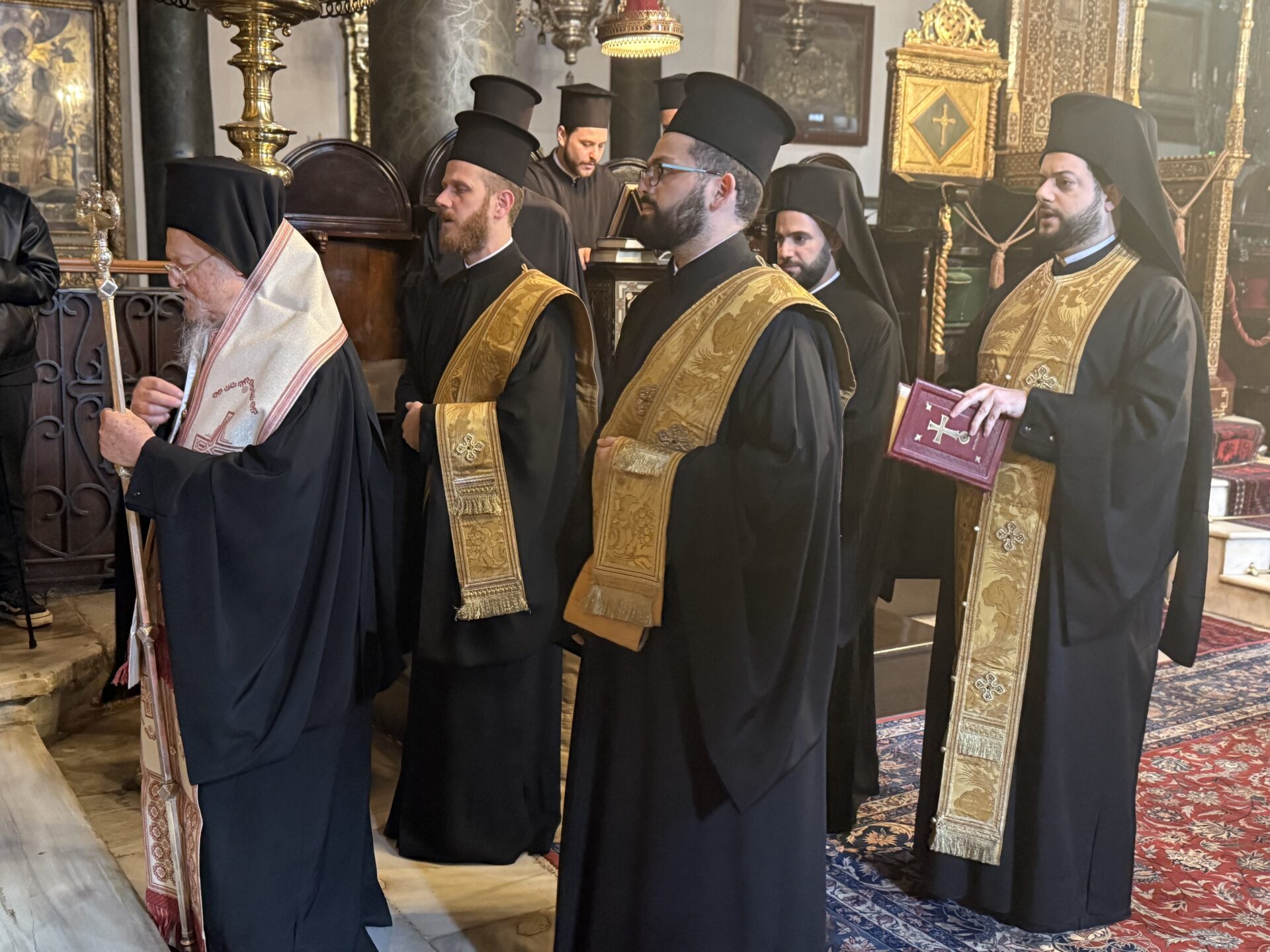Patriarchate of Jerusalem: The Service of the Lamentations of the Theotokos
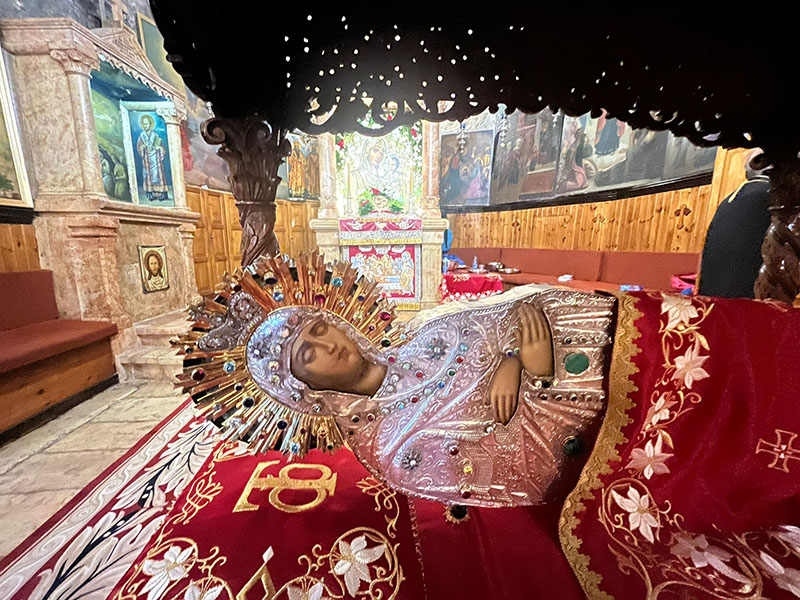
On Tuesday, August 14/27, 2024, the Service of the Lamentations of the Theotokos was held at the Theotokos’ Tomb in Gethsemane.
For this service, the Patriarchal entourage marched from the Gate of the Patriarchate down Via Dolorosa, meeting the Abbess of Sayda Naya and the Hegoumens of Saint Charalambos, Praetorium, Saint Nicodemus, Saints Joachim and Anna, and Saint Stephen before reaching the rectory of Gethsemane.
There was a small reception while the Priests were getting ready for His Beatitude’s welcoming reception in the courtyard of the Holy Church of the Dormition.
After the blessing at the entrance and the incense offering, the Patriarchal entourage went down the stairs of the Holy Church to venerate the Theotokos’ Tomb while the hymns of the day were chanted.
Presided over by His Beatitude, the Service of the Lamentations began, with the incense offering at the beginning of each of the three stases. His Beatitude Patriarch Theophilos of Jerusalem offered the incense first, followed by His Eminence Metropolitan Hesychios of Capitolias and His Eminence Metropolitan Timotheos of Bostra, as the Lamentations were chanted by the High Priests, the Priests and the Byzantine Choir.
Before the Exaposteilaria His Eminence Archbishop Aristarchos of Constantina delivered the Sermon of the day as follows:
“Your Beatitude, Father and Master, Reverent chorea of Hierarchs, Mr Consul General of Greece, Reverend Priests, Reverend pilgrims,
Great, sacred and respectable is the holiday that the Church celebrates today. The Feast of the Dormition of our Most Blessed and Glorious Lady the Theotokos and Ever-Virgin Mary. It is a universal celebration in the Church all over the world. However, it is a celebration, especially in the place of her Dormition and burial, the holy Zion, “Gethsemani the village”.
Theologically and educatively, the rich hymnology of God-inspired Fathers and poets of the Church, such as Saints John of Damascus, Cosmas of Melody and others, guides us to the meaning of the feast. These Fathers assure us that they are handing down to us what they received from the Church, what the tradition handed down to them, which they advise us to keep unchanged.
For our contrite and magnificent Epitaph Service today, the tradition of the church informs us that the Virgin Mariam, the daughter of the Holy Ancestors of God Joachim and Anna, slept in the Lord on the hill of Zion and had her memorial service and burial done by the Holy Apostles who “by the spirit of God” were gathered in Gethsemane, in front of her sacred tomb.
For this death the Church does not mourn, but celebrates, rejoices and is glad, “in voices it cries out loud and in hymns it sings”, because it is a matter of sleep, metastases, transition, change of state of life, as Saint Gregory Palamas and other Fathers of the Church say. It is about her transition through death to heaven, not only of her soul and spirit but also of her body. Soul and body, as depicted in the icon of the Dormition, the Lord and her Son received her and placed her to sit at His right hand “clothed in a white garment”, as the first after God of the triumphant Church, above the heavenly Orders, interceding for those who honour her and the whole world. The death of the Virgin became for her a bridge and passport to eternal life, the resurrection before the common resurrection.
To our question of how and why this happened, how such greatness happened to the Virgin Mary, the Church answers, because the Most High chose her, destined her and called her to be His partner in His work of the salvation of man, in the work of the Incarnation of His Son and she proved to be the value of the call, she freely accepted the call saying, “let it be done unto me according to Thy will”. Then God dwelt within her, “he made her womb a Throne” and did not consume her even if our God is “a consuming fire”. Not only did God dwell within her, but also from her flesh He borrowed His human nature. From the Holy Spirit and from her pure blood, the Incorporeal was incarnated, the Anarchus took the beginning of time as a man, he took on animate and rational flesh from the Holy Virgin, he took on the whole man, God also became a man, God-man. As the Church sings, the Virgin Mary “lent flesh to the omniscient Word. “God came from her loins”, that is, she gave birth to God and for this she is rightly called and is “Theotokos”. In her immaculate face, the words of the hymn are verified today, “The bounds of nature are overcome in thee, O immaculate Virgin, for thy childbirth is virginal” the birth of Christ, is from a virgin mother “and thy death is the espousal of life”, death happens so that the Virgin may pass into life. She is the “virgin after childbirth and after death, she is living”, “the saver of her inheritance”, the Christ-named congregation of the Church.
Nothing is higher than that. This is the depth of the mystery of God’s providence for our salvation, which was accomplished through the Virgin. The Mother of God saw the previously incorporeal Son and Word of God born as a human being. She saw the invisible as visible, held Him in her arms, weaned Him, nursed Him, and ministered to Him faithfully throughout His earthly life in the flesh until the cup of the cross. Therefore, the honour and reverence given by the Orthodox Church to the person of the Most Holy Theotokos is due to her holy, most holy life, which had no personal sin except the Original and this “idle”, as Saint John of Damascus says, but primarily this honour is inextricably linked with the mystery of the Incarnation of the Son and Word of God our Saviour Jesus Christ, which was accomplished through her. Decreasing the honour towards the person of the Most Holy Theotokos, as happens in the Churches of the Protestant Doctrine, implies a reduction of the importance of the mystery of the Incarnation of Christ. The attempt to absolve the Virgin from the Original sin through the so-called Theology of Mariology of the Roman Catholic Church creates also a reduction in the importance of this mystery.
Gathered together, today we too in a holy Synaxis under the Primate of the Church of Jerusalem, His Beatitude, our Father and Patriarch of Jerusalem, Theophilos, around the sacred Epitaph of the Mother of God and in front of her Tomb, let us raise our prayer to the height of the Theology of the Church Fathers. Let us also approach with reverence and fear, like Moses before the burning and unburnt bush, that is, before the mystery of the virginity of the Theotokos. Let us also untie the belt of our personal passions, every link of injustice and malice. Let us follow Saint John the Damascene, saying “Come, ye faithful, let us draw nigh unto the tomb of the Mother of God, let us embrace it, touching it sincerely with the lips and eyes and forehead of the heart, and let us draw up bounteous gifts of healing that stream from the ever-flowing fountain” (Matins, Ode 9, 2nd Canon, Troparion 2). Let us ask for the help of the Theotokos, her intercessions to her Son because she has boldness, for the protection of the Christians threatened in the Holy Land and elsewhere, for the healing of the sick, for the help of the victims of wars from the ruler of the earth, for the guidance of the youth, for the unity in Christ of the Orthodox Churches, for the protection of the natural environment– God’s creation from the unconscious arsonists, for the protection of those who received asylum from the Patriarchate in the holy Monastery of Saint Porphyrios of Gaza and for the protection of the Theotokos’s Shrine from all evil intentions against it.
Let us thank the Most Holy Mother of God for all the benefits the human race has received through her, with first of all, our incarnate Lord Jesus Christ, and let us exclaim along with Saint Cyril of Alexandria in praising her during theThird Ecumenical Council of Ephesus;
“Hail Mary Theotokos Virgin-Mother, Light-bearer,
Hail Mary, immaculate vessel, the heirloom of the world.”
Intercede, we pray, for the Church of Jerusalem and for the whole world. So be it.”
The service continued with the Eulogitaria, Lauds and Doxology and the Hierarchs venerated the Epitaph.
Then the Epitaph was taken up the stairs to the main door of the Church, there was a supplication, the Apolytikion and Dismissal. The Holy Icon was placed for veneration behind the Tomb until the day of the Apodosis of the feast.
After the service, the Patriarchal Entourage went up to the Rectory where the renovator of the Shrine, His Eminence Metropolitan Joachim of Helenoupolis offered a fasting reception.
From the General Secretariat
Source: Patriarchate of Jerusalem
